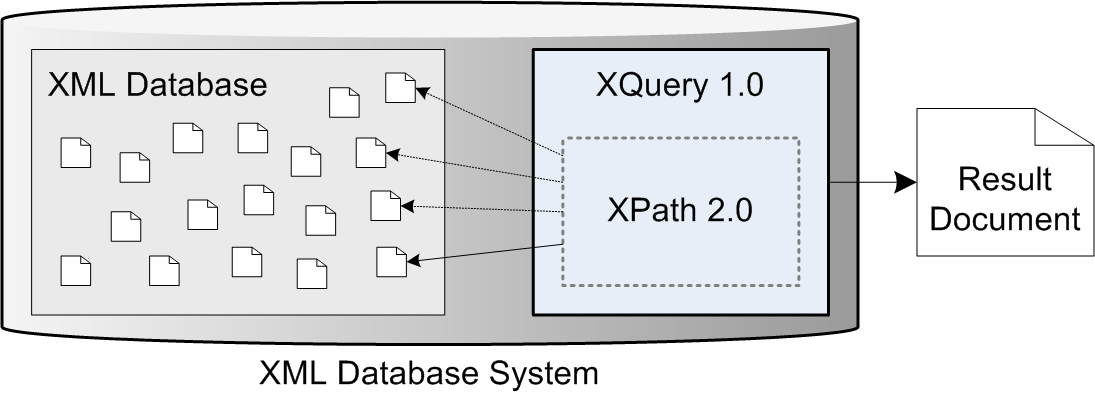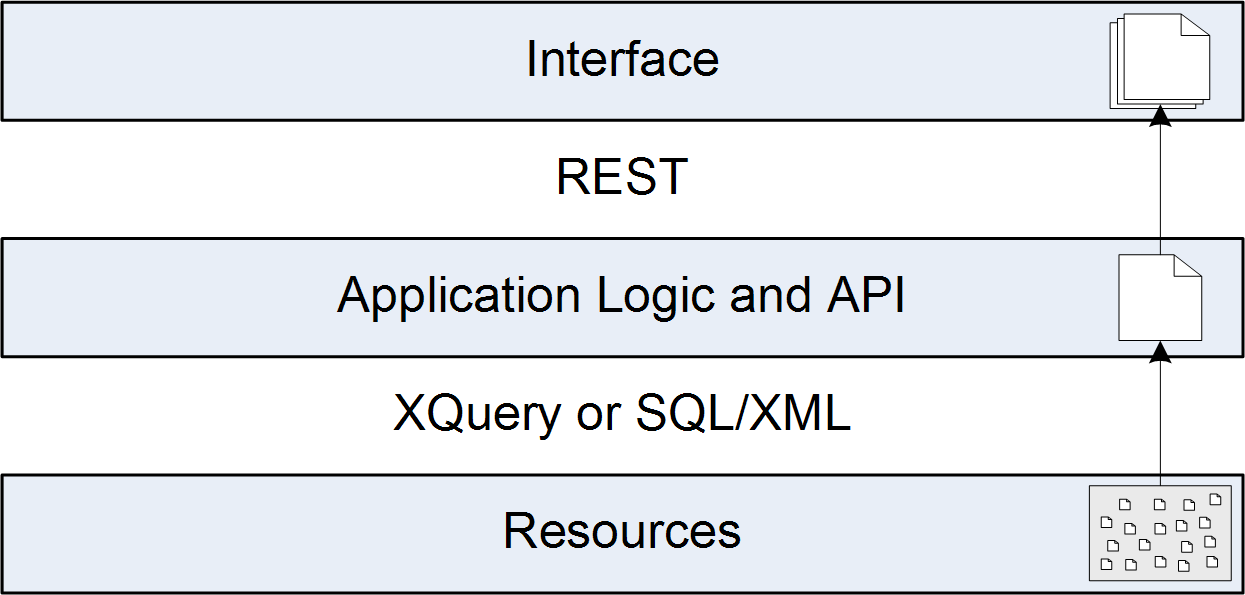For Let Where Order Return (FLWOR)
(14) XPath and XQuery
- Every XPath expression is a valid XQuery expression
- if you are good at XPath, you can reuse a lot of your knowledge
- XQuery provides alternative expressions and missing functionality
- XPath is a language for selecting nodes in existing documents
- XPath has no language features to construct new XML trees
- re-ordering a tree (i.e., sorting) also involves constructing a new tree
- XPath is more relevant for XSLT/XQuery experts
- advanced XPath concepts will take you very far
- XQuery expressions can be used to simplify XPaths
- in the same way as in XSLT, there is a trade-off in complexity between the languages
(15) XPath vs.
XQuery
- Choosing a certain style can be a question of taste
//reference[starts-with(date/@value, '2000')]/title
for $ref in //reference
where starts-with($ref/date/@value, '2000')
return $ref/title
(16) XQuery's Central Construct
- FLWOR is pronounced
flower
(it went through several syntax iterations)
- must have at least one for or let
- may have where and order by
- must have return
- Iteration over a sequence of items
- similar to for-each or similar loop constructs
- where is comparable to XPath predicates
(17) FLWOR – For
- Iteration over an input sequence
- for each item in the input sequence, a result is calculated
- the result of the for clause is the concatenation of all these results
- If there is only a return, it is the same as XPath's Iterations [XML Path Language (XPath) 2.0; Iterations (1)]
for $i in (1 to 10) return $i * $i
<titles>
{
for $ref in //reference/title/text()
return <title> { $ref } </title>
}
</titles>
(18) FLWOR – Let
- Declares a variable and assigns a value to it
- may use previously assigned variables
- can be used any number of times mixed in any order with for clauses
<titles>
{
let $title := //reference/title/text()
return <title> { $title } </title>
}
</titles><titles>
{
for $ref in //reference
let $title := $ref/title/text()
return <title> { $title } </title>
}
</titles>
(19) For & Let
- Variables in most cases are used for convenience
- they avoid repeating things and often result in a more structured query expression
- writing XQueries should not be an exercise in minimizing the character count
- For single items, for and let can be interchanged (handy for XPath)
let $x := 'whatever' return …
for $x in 'whatever' return …
(20) FLWOR – Where
- Filtering the items from for and let clauses
- there may be at most one where clause in a FLWOR expression
- it has to appear after all for and let clauses
- A where clause almost always uses a variable
- they act as filters of the sequences generated by for clauses
- they act based on the value of the items in that sequence
<titles>
{
for $ref in //reference
where starts-with($ref/date/@value, '2000')
return $ref/title
}
</titles>
- Predicates in XPath expressions do the exact same thing
- but predicates can only be applied to nodes
- SQL users find the where approach easier to understand
(21) FLWOR – Order by
- FLWOR results are evaluated in the order resulting from the for clauses
- for nested clauses, this means a nested evaluation of for clauses
- this will often reflect the document order (depending on the for XPaths)
- Any order other than this has to be achieved by sorting
- multiple sort keys can be specified separated by commas
- sorting can be done ascending or descending
<names>
{
for $person in //person
let $given := $person/givenname/text()
let $sur := $person/surname/text()
order by $given ascending, $sur descending
return <name> { $given, ' ', $sur } </name>
}
</names>
(22) FLWOR – Return
- Required in every FLWOR expression
- Constructs new nodes and fills them with values
- element constructors can be used to generate elements
- attribute constructors can be used to generate attributes
<names>
{
for $person in //person
let $given := $person/givenname/text()
let $sur := $person/surname/text()
order by $given ascending, $sur descending
return <name given="{ $given }" sur="{ $sur }"/>
}
</names>
![]() [http://creativecommons.org/licenses/by/3.0/]
[http://creativecommons.org/licenses/by/3.0/]


